From Good To Great: How A Brand Style Guide Can Transform Your Business Success

As a coach, you love helping people reach their goals and dreams. You’ve spent so much time perfecting your coaching skills and building a business that represents your values and expertise. Now, to take your coaching business to the next level, you might want to create a brand style guide for your business.
A brand style guide is a document that outlines the visual and messaging elements that represent your coaching business. Ultimately, it ensures that all marketing materials, from your website to your social media posts, are consistent and aligned with your brand identity. Certainly, a well-designed brand style guide can help you build a strong brand that resonates with your target audience and sets you apart from competitors.
So, if you’re feeling convinced and want to create your own brand style guide for your coaching business, here are the steps:
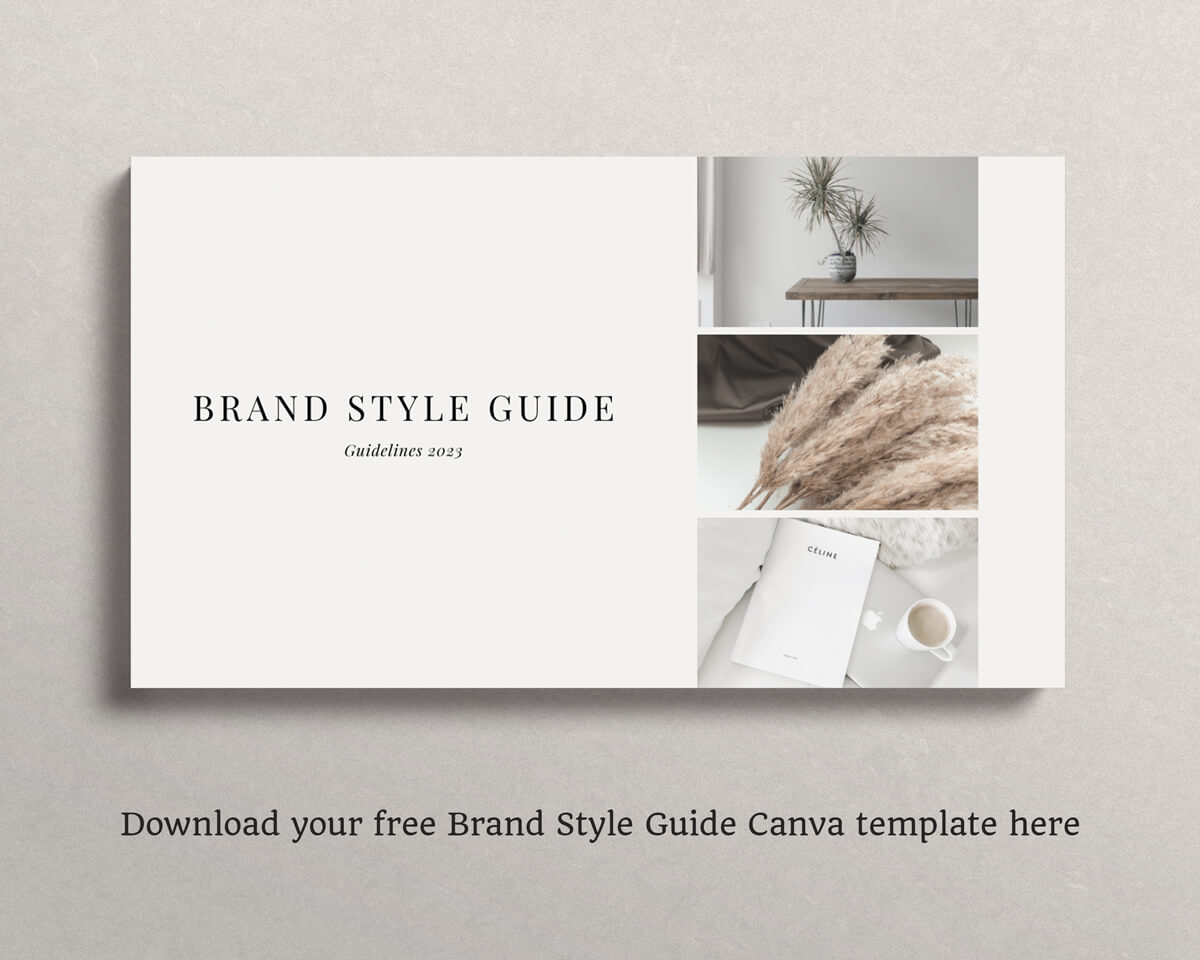
Create Your Brand Style Guide
1. Define your brand identity
Primarily, your first step in creating a brand style guide is to define your brand identity. Your brand identity illustrates the elements that reflect your coaching business, such as your mission statement, core values, and brand personality. So, ask yourself questions like:
- What do I want my coaching business to be known for?
- What values do I want to reflect?
- What personality traits do I want to convey?
With that said, if you’d like to dive into this further, you might be interested in this blog post which walks you through the steps of creating a brand identity.
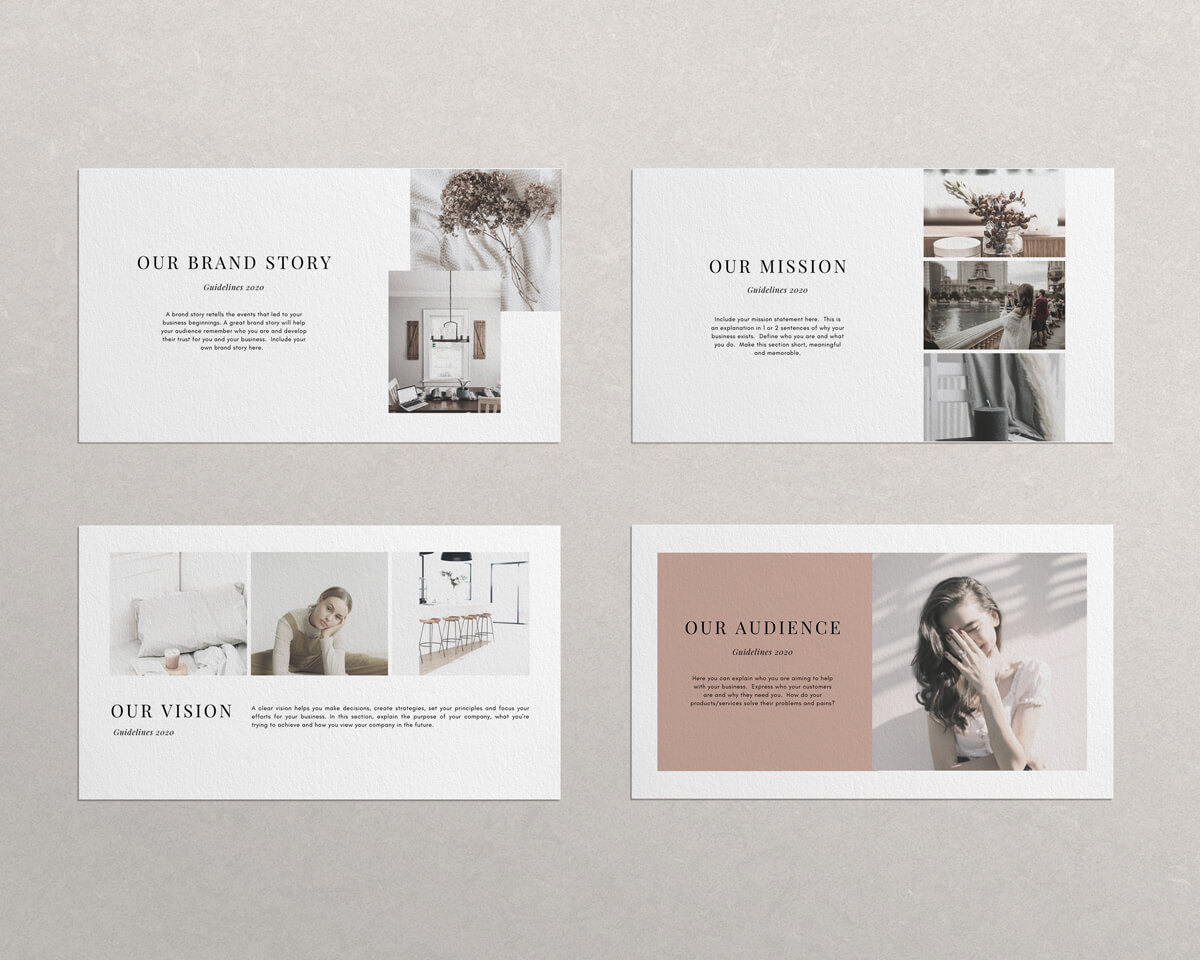
2. Develop Your Brand Voice and Messaging
After developing your brand identity, your next step is to define your brand voice and messaging. Essentially, your brand voice reflects your brand’s personality and the way you communicate with your audience. That is, your brand messaging consists of the specific words and phrases you might use when talking to your audience.
Therefore, it’s important to identify your brand voice and make sure it aligns with your brand’s values and goals. Consequently, you’ll be consistent across all your marketing and communication.
When developing your brand voice, consider your target audience and the values your brand represents. Choose a tone that resonates with your audience and reflects your brand identity.
For example, if your coaching business is focused on wellness and mindfulness, a soothing and calming tone may be appropriate. Conversely, if your brand is focused on productivity, a more motivational tone may be appropriate.
When creating messaging guidelines, consider the key benefits your coaching services provide. Also, take into account the unique value proposition that sets your business apart from others in the industry.
Use specific words and phrases that highlight these benefits and differentiate your brand from competitors.
In summary, developing a clear brand voice and messaging guidelines will help establish a consistent tone and message across all your marketing channels. This will build trust with your audience, increase brand recognition, and ultimately help you achieve your business goals.
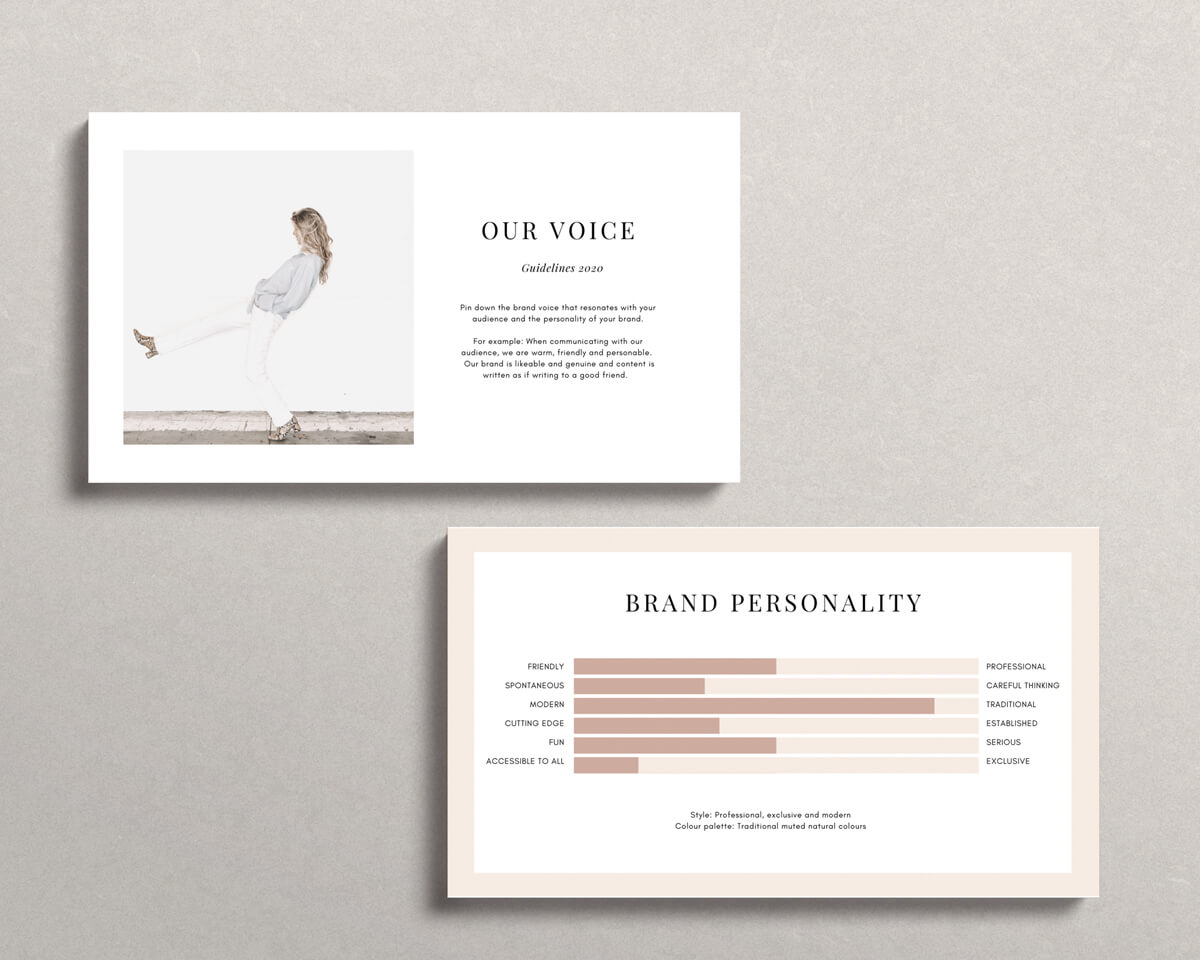
3. Choose Your Brand Colours and Typography
Next, it’s important to create a strong visual identity for your coaching business and you can do this by choosing a brand colour palette and typography to represent your brand. Above all, try to select colours that reflect your brand’s personality and appeal to your target audience’s emotions.
For instance, aim to use a consistent colour palette across all your marketing materials to create a cohesive look and feel. You can start by selecting one or two primary colours and a few accent colours that complement them. This will help ensure consistency and make it easier for your audience to recognize your brand.
Typography is another essential element of your brand style guide. Therefore, choose fonts that are easy to read and align with your brand identity and tone of voice. Sans-serif fonts are often a popular choice for digital materials, while serif fonts are commonly used for print materials. Be sure to choose font styles and sizes that are consistent across all marketing channels to keep your brand consistent.
By selecting the right brand colours and typography, you can create a cohesive and visually appealing brand identity that your audience loves. As a result, your coaching business will stand out from your competitors.
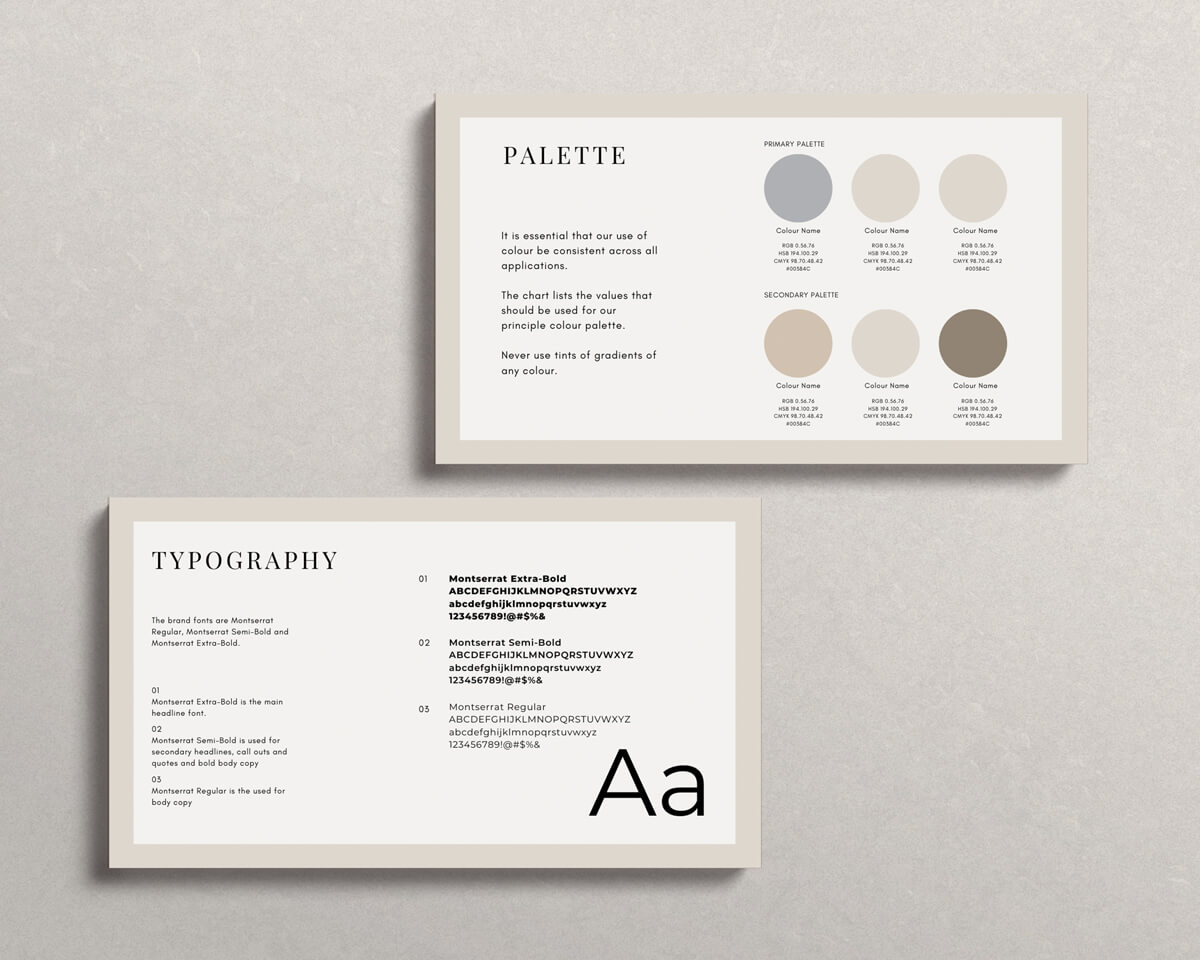
4. Define Your Brand Imagery and Graphics
Your brand imagery and graphics are visual elements that represent your brand, such as your logo and images used on your website and social media. Create guidelines for the use of your brand imagery and graphics to ensure they are consistent across all marketing channels. Provide specifications for the resolution, file format, and size of your brand imagery to ensure they are high-quality and suitable for all marketing materials.
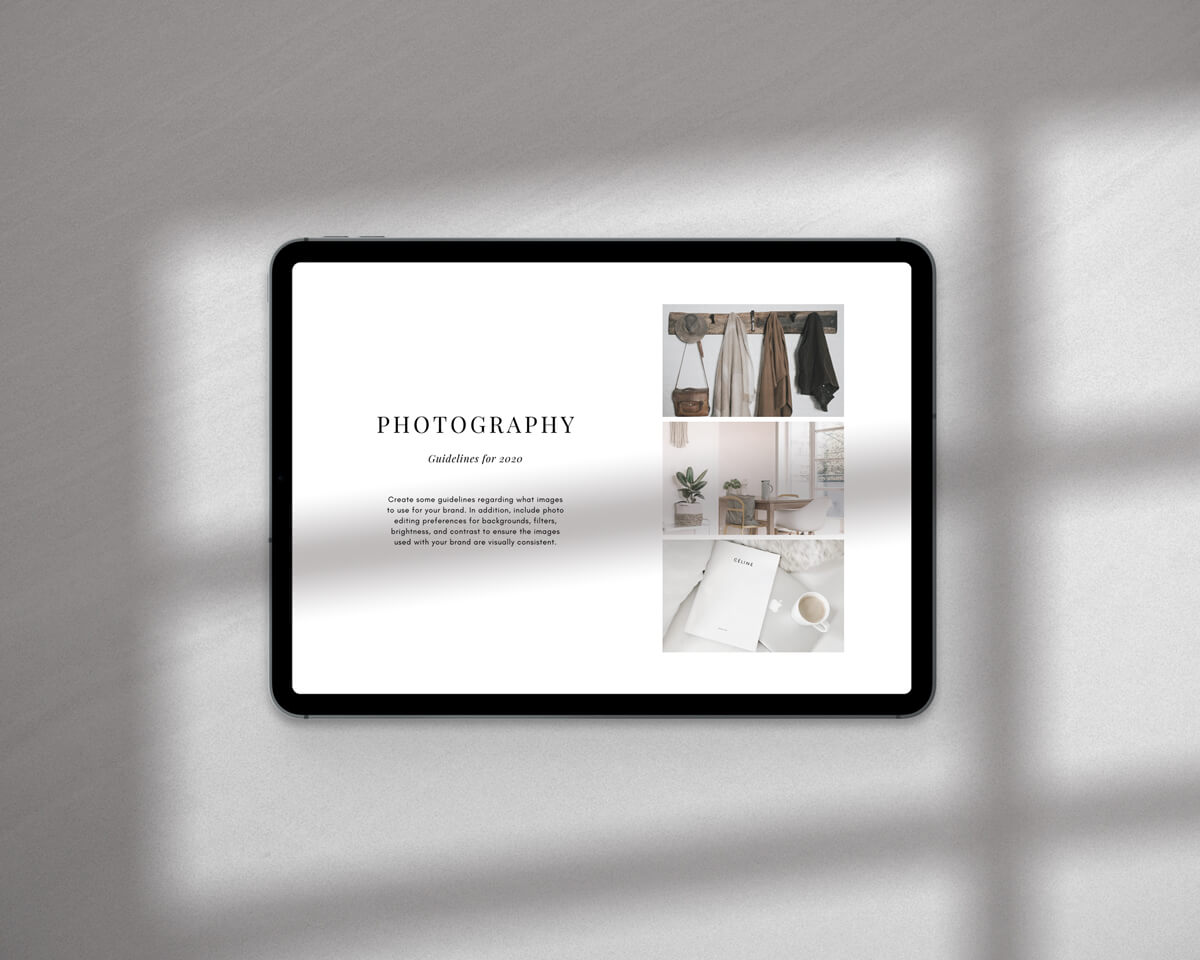
5. Create a Style Guide Document
The final step is to create a style guide document that outlines all the visual and messaging elements of your brand. Your style guide document should include guidelines for your brand voice, messaging, colors, typography, imagery, and graphics. It should also provide examples of how to use these elements across various marketing materials, such as your website, social media, and email marketing campaigns.
Want a head start with creating your Brand Style Guide?
Well, I have a gift for you – a done-for-you Canva template to help get you started on creating your own Brand Style Guide for your coaching business. Subscribe below to download your PDF with the link to the Canva template.
In summary, creating a brand style guide is an essential step in building a consistent brand for your coaching business. Furthermore, by defining your brand identity, developing your brand voice and messaging, choosing your brand colors and typography, defining your brand imagery and graphics, and creating a style guide document, you can ensure that all your marketing materials are consistent and aligned. This will help you build trust with your target audience, increase brand recognition, and ultimately grow your coaching business.



